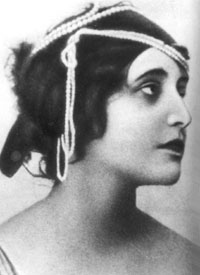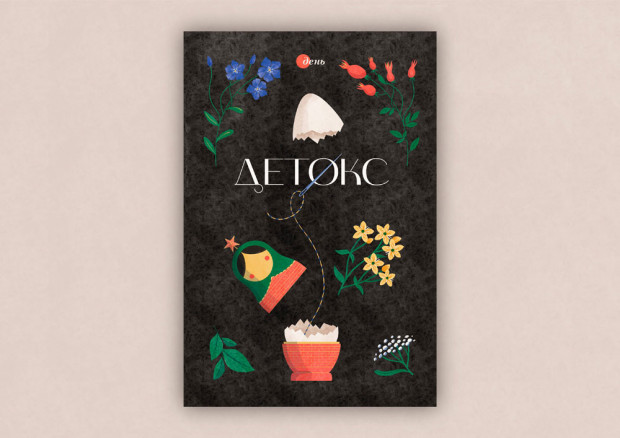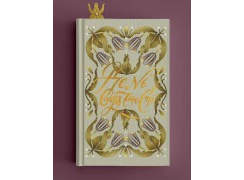Vira Kholodna, silent film star, died on February 16, 1919

No matter how many generations separate modern film from the first silent flickers, the plasticity of light born in wood barracks, the great silent phantom is still in the filmmakers’ subconscious, prompting them to act according to the formula in which an illusion created by flickering light reflects man’s inner world.
Symbolism dominated the early twentieth century, with the image becoming a fetish, with people spellbound as the shimmering screen carried them away from reality. Succumbing to the venomous foresight of the unfolding century, fed up with all kinds of refinement, the public was irresistibly drawn to dark, often primitive structures where, in a stifling atmosphere, they watched a magic flower blossom on a white square of cloth beamed from the projectionist’s box, with black and white shapes and figures springing to life.
Movie houses brought in staggering and steadily increasing profits. Filmmaking had become an industry. As World War I broke out Russia was flooded with foreign-made silent movies, which gave powerful impetus to domestic filmmaking. Financial support enhanced the position of the new mass art. Money also dictated the rules of its further development. Yet musical accompaniment evolved even more quickly, such that one found a piano or two even in a backwater provincial movie house. Comfortable auditoriums began to be built. Kyiv’s Shantser Theater had a small symphony orchestra positioned in front of the screen, and there was a special program for every film. Other motion picture theaters had music quartets and trios, sometimes the program included a divertissement. Instinctively, the cinema was absorbing the versatility of colors of the epoch, producing a cocktail of symbols, music, primitive commerce, and theatrical frills. At the same time, its birth signified a dying epoch in individual frames, the actor’s confusion, faced with an invisible audience.
Women occupied a special place in the newborn art. In a silent film it was impossible to convey the plot’s underlying principles using conventional dramatic techniques. Now a heroine had to get across to the audience by the expression in her eyes, posture, turn of the head, movement of the torso and hands. In the West, one of the first such silent movie stars was Asta Nilsen, and here it was Vira Kholodna. She was a living legend, totally mysterious, an embodiment of the instant stardom that would last the century. Her mind-boggling popularity combined with singular talent and tragic lot. She had a pair of huge sad eyes, a full and submissive mouth that made her the queen of dreams of a whole generation. Her film career was dramatically short, just three years, yet her roles still embody cinematography’s youth in the viewer’s eyes.
She was born in Poltava, to the family of a high school teacher named Vasyl Levchenko. She was the first child. She had a wonderful appetite, so her mother nicknamed her Poltava Dumpling. Two other daughters were born and Vira’s childhood ended soon. The father died, and mother was often ill. They moved to Moscow now and it was at her senior prom that she met a young lawyer named Kholodny. They soon married. Contrary to gossip and stories, their love endured all trials — publicity, war, being often apart — and lasted Vira’s entire short and eventful life.
Vira’s husband was an inveterate risk-taker, one of the first automobile drivers of the time, an invariable participant in motor races; he published and edited the newspaper, Avto. In 1915, an army officer, he was gravely wounded at Warsaw and awarded a gold sword. The Kholodnys were a noted Ukrainian family. Volodymyr Kholodny’s brother was a botanist, later a member of the Ukrainian SSR Academy of Sciences, a world-renowned scientist. The Academy’s Institute of Botany is named for M. H. Kholodny.
Vira and Volodymyr left two daughters, Nonna and Zhenia. Dying of influenza in Odesa, Vira repeated feverishly, “Volodymyr is in Moscow, he doesn’t know I’m dying.” In fact, Volodymyr never reconciled himself to her death. After a memorial service in Moscow he felt and looked heartbroken. He was oblivious of what was happening around him, withering away, and soon he followed his wife. Their destiny proved strikingly reminiscent of those in Vira’s films. Her screen performances were like sorcery, fatal for the actress.
She dreamed of an actress’ career as a small girl. She attended classes at the Bolshoi’s ballet school, but not for long. Later she was a member of a youth studio at the Moscow Art Theater. She loved parties and acted as hostess at studio receptions with artists, poets, writers, and musicians. The studio was visited by Balmont, Leonid Andreyev, Andrei Bely, composer Ilia Satz, among others. All were convinced that Vira would dedicate her life to the theater. Then suddenly, as she often did, she changed her mind and went into the cinema.
In the fall of 1914, the young actress visited Timan & Reinhard specializing in motion pictures of the popular Russian Gold Series. Vladislav Gardin used her as an extra playing a nanny in Anna Karenina’s ball scene. He was captivated by the girl’s beauty. However, much as he wanted to give her a major part, Timan shrugged her off as hopeless from the outset, saying “We need actresses, not dolls.”
Indeed, at first glance Vira struck one as an ideal model. She was so different from the other actresses in mob scenes treated by the audiences almost as pieces of furniture, concentrating on the main characters. She did not gesticulate frantically or roll up her eyes, trying to convey her mood; she did not hang around the hero, trying to keep in front of the camera. She stood out of the scene without even trying, just by being her natural self. A slight turn of her head, movement of a finger had more meaning than all the gesticulation by anyone else. She arrested the audience’s attention immediately, and it waited breathlessly for her next appearance, watching not the plot unfold but the actress alone.
She was discovered for the cinema by Yevgeni Bauer who starred her in his Song of Triumphant Love (Khanzhonkov Studios). When the film was being made, Khanzhonkov signed a contract with Vira for three years, a prudent businessman’s move that would make him proud long afterward. Bauer said, “I have found a real treasure.” Incidentally, he also discovered Mozzhukhin, Maksimov, Polonsky, and others.
The Song turned out to be a sensation, even though the audiences were oversupplied with such stories. People watched it five times or more. From then on Khanzhonkov’s firm had no fear that any further productions would be box-office failures, not with Kholodna. In fact, every script was kept top secret at the time, by every studio, lest a rival steal it and make a picture earlier, because people would not watch the same story twice. Movies starring Vira Kholodna were advertised even before the shooting began, because people would be sure to want to watch them.
Her performances changed the films’ composition. Bauer, as a creative professional, was subtly aware of what one’s face would look like on the silver screen. He used frozen frames, fade-ins and fade-outs to convey his story, usually tragic, ending in the heroine’s death. Prior to Vira’s appearance onscreen, the hero was usually tended by women; now a woman was in the limelight, surrounded by stars like Maksimov, Runich, and Polonsky. Vira barely used any theatrics. Subconsciously, her portrayals touched the invisible strained nerve of the debauched epoch. A somnambulant woman, losing what was left of her willpower, blindly succumbing to passion leading to her own destruction. Such was Vira’s dramatic specialty, and this image best fitted into the predominant atmosphere of a decaying world already contaminated by a new mentality, simultaneously destructive and inexorable. Strained versatile emotions, farce verging on the grotesque - all this saturated her pictures, each story like the next. Even though her drawing-room ladies were equally shallow, she somehow remained immune to banality. In a word, Vira’s heroines looked strikingly real in the primitive cinema of the time.
Her creative record boasts about a hundred screen roles - no one knows exactly how many, as most of the films succumbed to the ravages of time. Her screen triumph did not pass unnoticed by the giants of Russian drama. Konstantin Stanislavsky offered her the part of Katerina in Ostrovsky’s The Storm and suggested she join the Moscow Art Theater. To her, this was a true acknowledgment of talent, not one relying on skilled photography, but the genuine gift of dramatic identification. Yet she could not bring herself to part with the cinema, aware as she was that the theater would allow her to reveal her creative potential on a far broader scale, showing nuances hidden from the eye within the narrow frame of the film. In many respects, her choice determined her own tragic lot.
For business reasons, Khanzhonkov’s filmmaking firm moved to Odesa, building a studio on French Boulevard. Vira had to part with her family to carry out the contract. Shooting took up most of her time, for the public demanded more films and her popularity was fantastic.
While in Odesa, she often met with Aleksandr Vertinsky. He is believed to have been secretly in love with this queen of the silver screen, and many of poems are allegedly dedicated to her. He would often watch her silently for a long time, without a word, his face a stolid sad mask. He was a man given to mannerisms, absent-minded in an aristocratic sort of way, and no one knew - or ever will - whether he was really infatuated or just pretending.
The worlds of film and theater adored Vira Kholodna, as did her audiences. She was Russia’s top movie star (she did not even realize the kind of publicity she had. But the pendulum of time was gaining momentum; few if any can keep their balance, retaining constancy and life as such. The windows of Popudova’s home on Soborna Square, where Vira lived in Odesa, reflected the scarlet maze of the Civil War and French occupation. She found refuge in her work, but work drained her physical strength. The city was caught in the Spanish influenza pandemic of 1918-1919, adding heavily to the death toll of war and revolution (statistics point to more victims of the flu than casualties on all the fronts of World War I fronts, over 20 million worldwide). Vira contracted it, and with her it progressed rapidly, looking like the plague. Literally the whole city would spend sleepless nights, many a resident standing vigil by her home, waiting for the doctor’s morning report. Old Prof. Uskov, unnerved by such public concern, could only cry helplessly on the porch. Vira Kholodna passed away at 7:30 p.m. on February 16, 1919 (the time was checked by hundreds of her funs). The funeral took place February 19, with all the residents joining in the procession. There are old newsreels showing a huge crowd and an ornamented coffin sailing over people’s heads.
Meanwhile the age was playing back the last reel with a Kholodna movie. The new era of cinematography, keeping pace with social evolution, would shift emphasis to the West. Many actors and film directors would flee their country caught in the vortex of fratricidal war, epidemics, devastation, hunger, constant changes in government and values. Some would later return, among them brilliant filmmakers, actors, and writers. The world cinema would be enriched by new talented women capable of turning the medium into a world of wonder, of dreams coming true on the silver screen. But the name of Vira Kholodna remains among those at the top of the list, alongside Asta Nilsen, Pola Negri, ahead of Greta Garbo, Marlene Dietrich, and Marilyn Monroe.






